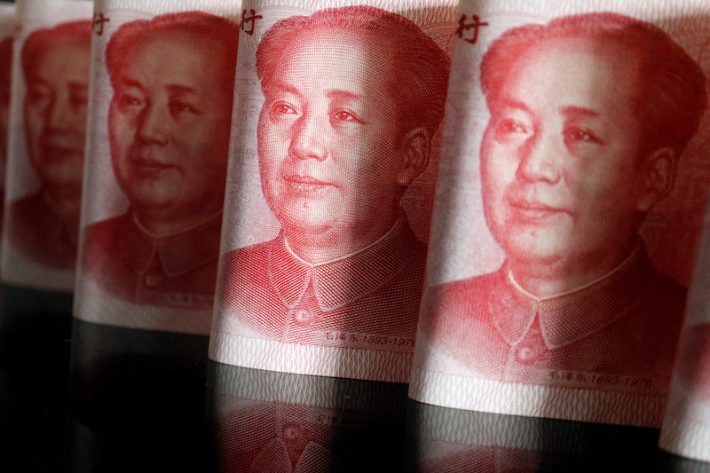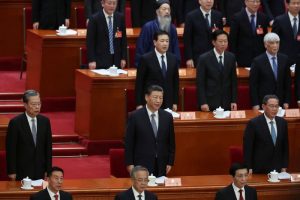Chinese investors are boosting investment in offshore bonds as the US dollar surges and US interest rates rise sharply.
The latest data is deepening concern about capital flows and adding pressure on the yuan, which has dropped to 7.1266 per dollar.
China’s outbound investment under the cross-border Bond Connect scheme totalled 301.5 billion yuan ($42.3 billion) at the end of August, up 34% from a month ago, the Shanghai Clearing House said late on Friday.
The southbound link of the scheme allows mainland Chinese to buy tradable bonds in Hong Kong, regardless of their currency, and such investment has grown rapidly every month since March, when holdings totalled just 15.9 billion yuan, or 5% of the current size.
The growing Chinese appetite for offshore bonds comes as diverging monetary policies widen interest rate differentials between China and the United States.
The spread between 10-year US and Chinese treasuries has exceeded 100 basis points – the biggest gap in 15 years – as the Federal Reserve raises rates to combat inflation, while the People’s Bank of China eases policy to bolster its economy.
Hong Kong’s monetary policy moves in lock-step with that of the United States as the city’s currency is pegged to the US dollar.
China’s surging outbound debt investment, coupled with cooling foreign interest in Chinese onshore bonds, threatens to worsen capital market outflows.
Overseas investors reduced holdings of Chinese bonds for a seventh consecutive month in August, while China suffered a capital and financial account deficit of $80.2 billion at the end of June, according to the latest official data.
Increasing outflows threaten to pile fresh depreciation pressure on the yuan, which has lost nearly 11% against the dollar, easing to a near 28-month low.
The dollar index hit a 20-year high as the market braced for more US rate rises ahead.
China may need to cut banks’ required reserve ratio (RRR) in the fourth quarter to keep liquidity ample, the official China Securities Journal reported on Saturday, citing economists.
Capital outflows risks will be the main concern if the People’s Bank of China considers rate cuts in the fourth quarter to spur growth, Eurasia Group said in a note on Saturday.
“Prominent economist and government adviser Yu Yongdong published an opinion piece in Caixin on 20 September stating that China should keep the renminbi as flexible as possible, prioritize stabilizing growth with expansionary fiscal and monetary policies, and tighten regulations to prevent capital flight,” it said.
- Reuters with additional reporting and editing by Jim Pollard
ALSO SEE:
Flood-Hit Pakistan Should Seek Loan Rejig, UN Says – FT
Asian Currencies Sink as Dollar Soars, Banks Hike Rates
More Foreign Buying of Emerging Asia Ex-China Bonds in August
























